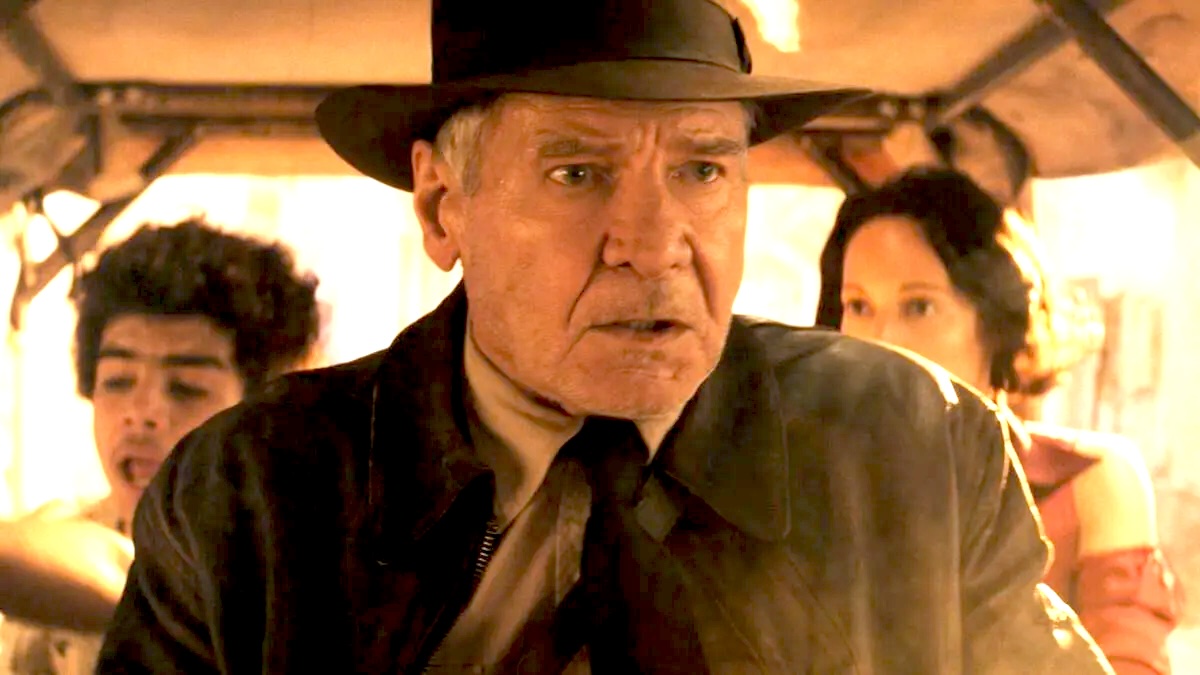Disney’s Flop to the Tune of $134 Million Proved Exactly Why We Need Mid-Budget Movies
Even a reported $387 million budget wasn't enough to save Indy 5.

During his acceptance speech at the 2024 Academy Awards, American Fiction writer-director Cord Jefferson used his time in the spotlight to highlight a glaring issue taking place in Hollywood, loudly calling out “risk-adverse” studio executives.
“Instead of making one $200 million movie,” he said, “try making 20 $10 million movies. Or 50 $4 million movies.” It’s a great speech, and a timely one at that, as 2023 was definitively the year of big budget blockbuster flops. From Marvel Studios’ The Marvels becoming the lowest-grossing Marvel Cinematic Universe entry of all time to Disney’s Wish barely managing to break even on its reported $200 million budget, the harrowing reality of expensive productions is that the results seem, well, cheap.
Among the biggest box office misfires of last year was Lucasfilm and Disney’s Indiana Jones and the Dial of Destiny, directed by Academy Award nominee James Mangold. Starring Harrison Ford as the titular bullwhip-toting archeologist, the film marks the fifth and final installment in the franchise—though let’s be real: It wouldn’t be beyond Disney to greenlight some sort of Indy prequel or spinoff series somewhere down the line.
With an all-star cast of Hollywood heavy-hitters including Ford, Phoebe Waller-Bridge, Mads Mikkelsen, and Boyd Holbrook at the helm, it seemed the odds were ever in Dial of Destiny‘s favor. However, that couldn’t have been more wrong, as the blockbuster grossed just $384 million worldwide against a reported budget of $387 million.
Per a damning Forbes report, financial statements released at the end of March confirmed that “Disney spent $134.2 million more on making the movie than it is understood to have received in ticket sales”—even more than analysts initially believed the deficit to be.
Although this historic box office bomb doesn’t necessarily mean that the movie itself was bad, the colossal financial failure of the latest Indiana Jones flick seems to have marked a turning point in audiences’ confidence—or lack thereof—in the future of big budget tentpole movies. And maybe that’s a good thing.
It’s time to bring back mid-budget movies
If anything, 2023 proved that larger production budgets don’t necessarily equate large profits, though it’s—albeit, slightly—understandable to see why major Hollywood studios would place heavy bets on resurrecting beloved IP à la sequels, prequels, spinoffs, and live-action remarks. After all, Avengers: Endgame and Avatar: The Way of Water remain two of the highest-grossing movies of all time.
Now, however, faith in major franchises (particularly the MCU) is dwindling, with Disney constantly being accused of putting quantity above quality—especially with its Disney+ catalog continuing to grow at a rapid rate. Needless to say, Disney and many other studios are, in many ways, wasting their money on massive tentpole films when the reality is that most moviegoers appear to be gravitating towards mid-budget films like 2021 Oscar winner Nomadland, 2024 nominee Anatomy of a Fall, and even “low-brow” horror movies like Blumhouse’s M3GAN, all of which profited big time at the box office.
Take Everything Everywhere All at Once, for example, which was made on a micro-budget of just $25 million. The result was an earnest, heartfelt movie that felt like a true Hollywood success story from start to finish. Oh yeah—it also went on to snag an Academy Award for Best Picture in 2023. The Daniels’ “scrappy” filmmaking techniques saved millions in production costs while still managing to churn out an expensive-looking movie, and from the sounds of it, Disney should take notes.
Of course, superhero flicks like DC Studios’ Aquaman and the Lost Kingdom require extensive CGI, which accounts for a large portion of the production budget. Yet, somehow, Gareth Edwards’ visually striking The Creator (distributed by Disney, mind you) managed to create a futuristic sci-fi universe for just a fraction of the cost. So what’s the deal with hugely popular IP suffering from financial losses?
Well, in Disney’s case, it’s easy to blame streaming. Although subscribers initially flocked to Disney+ following its launch in 2019—made all the more appealing by its $6.99/month price tag—the platform has since backfired, and hard. Not only is Disney+ itself losing subscribers by the thousands (much to the chagrin of CEO Bob Iger), but its debut also had the, perhaps, unexpected consequence of driving off ticket sales.
Given that most Disney films typically arrive on the streamer within 90 days of its theatrical release, patient fans who already pay for Disney+ are far less incentivized to actually go to movie theaters—and that’s not even accounting for lingering COVID-19 fears.
With less incentive to actually go to theaters and Disney+ essentially diminishing demand for DVD or Blu-Ray sales, it’s no wonder blockbusters like Dial of Destiny have a near-zero chance of succeeding at the box office these days.
Meanwhile, it’s also time to start scaling down on extensive marketing campaigns, VFX-laden franchise films, and hiring A-list actors with exuberant rates in favor of putting quality storytelling first. It’s been proven time and time again that even the most buzz-worthy names and obnoxious TikTok ads are incapable of “saving” Disney flops from disaster, and the public is starting to take notice.
As moviegoers continue to grow more and more disillusioned with major IP, it’s never been more obvious that Hollywood desperately needs to expand beyond its blockbusters, and Dial of Destiny is cold, hard proof. Diversifying movie slates could be the key to studios’ survival, and there’s no better way to accomplish this than green-lighting, say, more Cocaine Bears and less Shazam! Fury of the Gods.
Only time will tell if studios actually listen.
(featured image: Lucasfilm)
Have a tip we should know? tips@themarysue.com